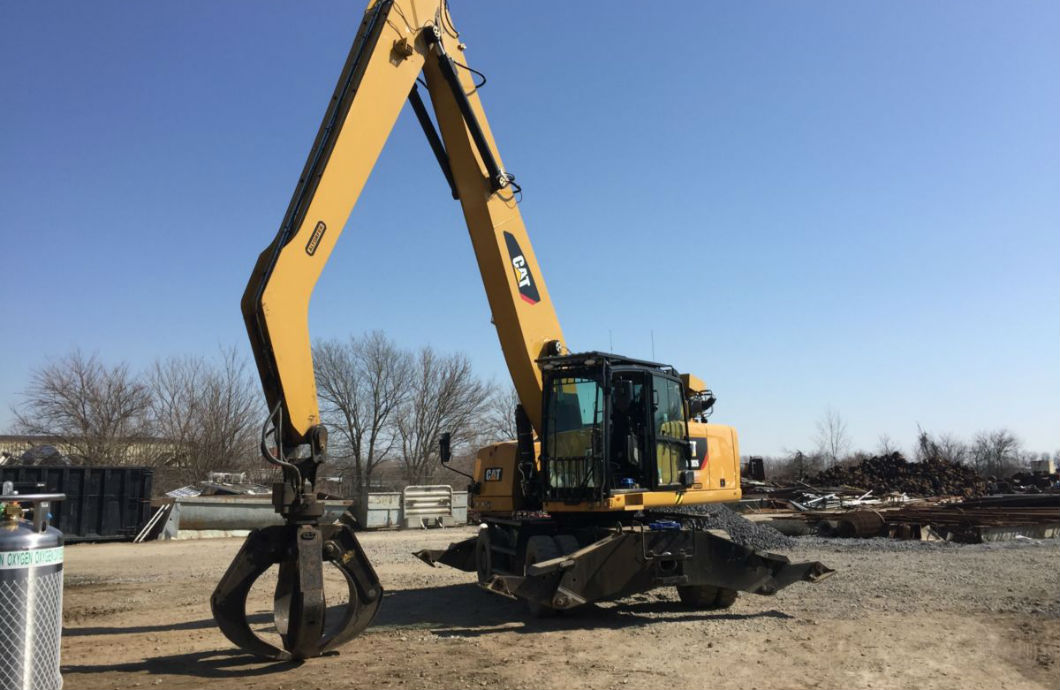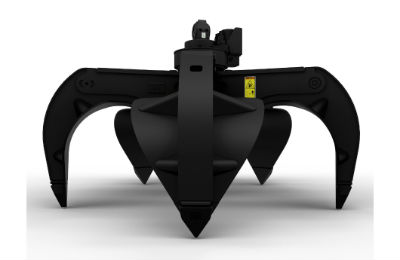
As a replacement for their GSH15B Series, Cat’s brand new GSH420/GSH520 orange-peel grapples have been designed specifically with refinements for effectively handling bulk materials. These grapples are ideal for a wide variety of applications, such as handling shredded scrap, like long structural beams and car bodies, handling rocks at construction sites, and dealing with waste at recycling and transfer stations. This new level of performance and efficiency are meant to help waste-handling operators to meet the increased challenges surrounding environmental regulation, tight budgets, and the pressure to recycle.
The new grapples feature horizontal placement of the cylinders, thus creating a profile that allows for effective material penetration and efficient bulk-material handling. The design enhances the strength, reliability, and durability of the new grapples, which are available in four-tine and five-tine shell configurations and in closed or semi-open versions. In addition, the GSH420 and GSH520 feature a redesigned rotation system. The new grapples are designed to work with the Cat MH3022, MH3024, and MH3026 material handlers.
Long-term durability
The design of the GSH Series grapples features construction of high-grade, impact-resistant steel that protects vulnerable areas, such as hydraulic cylinders. For added durability, high- quality bushings with lubrication grooves and hardened pins are used in all pivot points. Tines are configured with replaceable cast tips made from BHN 445-555 material that resists wear.
In addition, solid hinge-point construction and robust end-stops ensure long service life, and routing hydraulic hoses within the tines reduces hose wear. All mounting brackets feature a solid pin to keep the bracket in an upright position for ease of installation. Also, the new GSH grapples feature a standard lifting eye on the bottom of the housing for expanded versatility, such as mounting a magnet.
The new HR10 rotation group, featuring a new swivel, significantly reduces hydraulic restriction by increasing return-flow capacity by 160 percent and by increasing open-flow capacity by 30 percent. Less restriction results in faster cycles and lower fuel burn.
